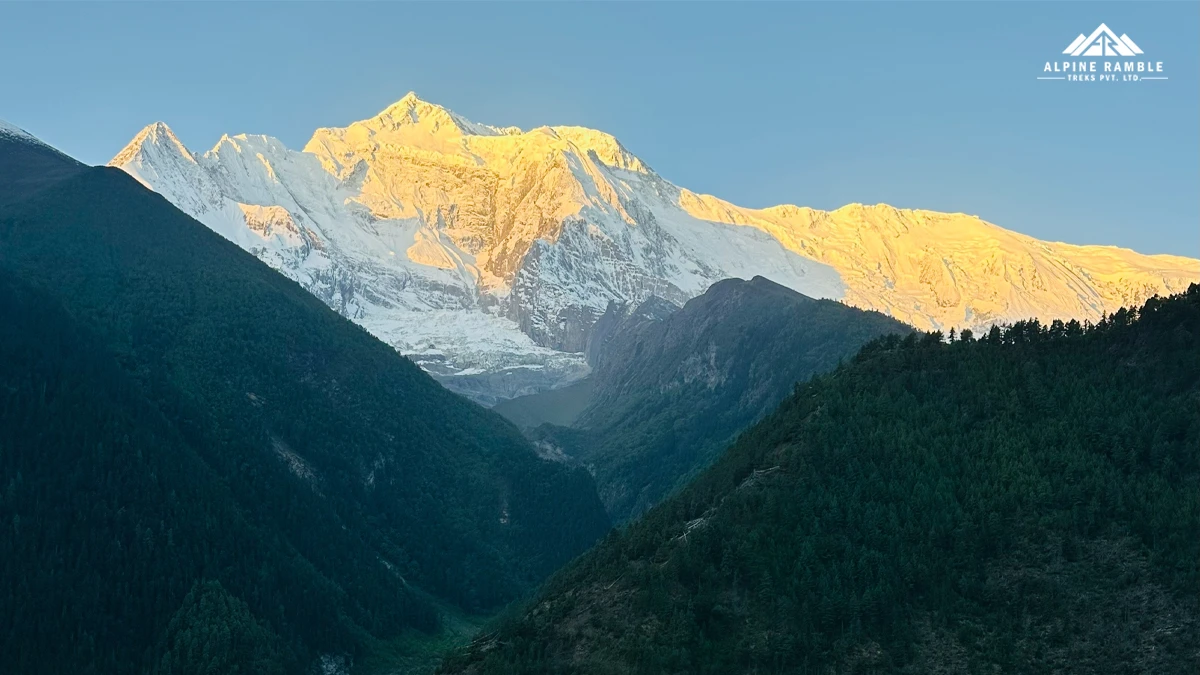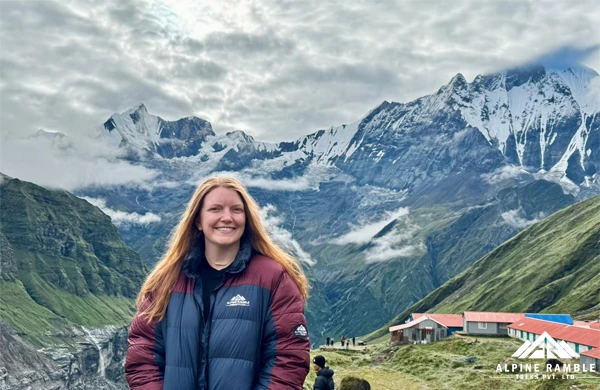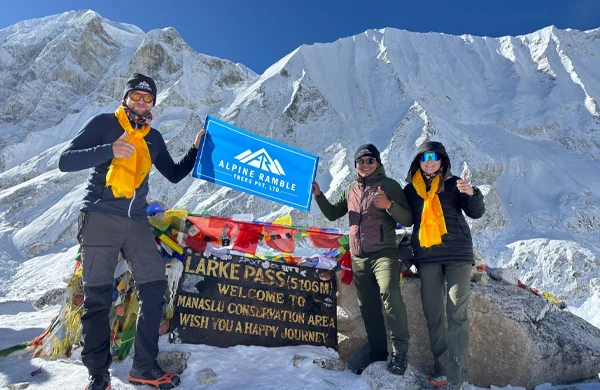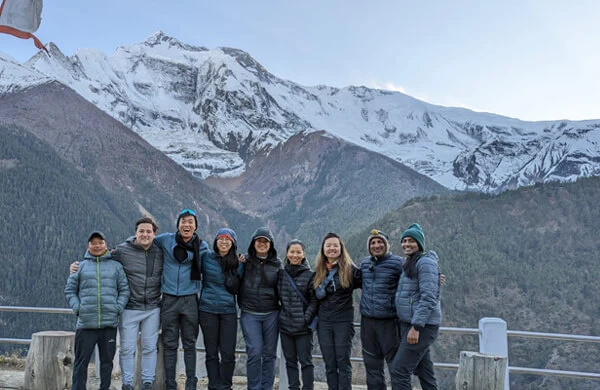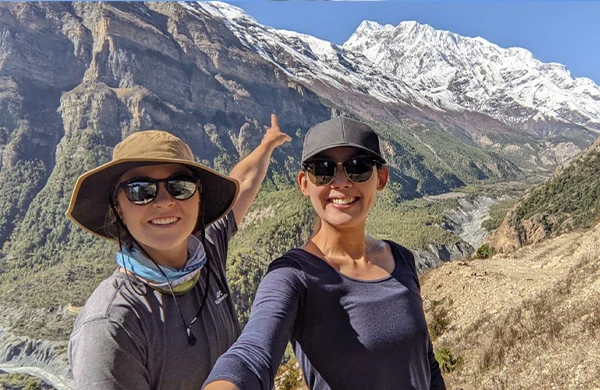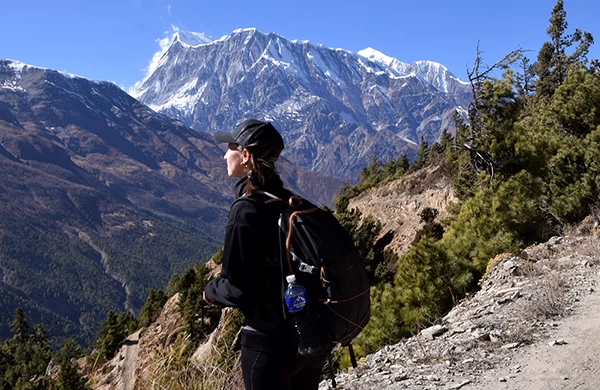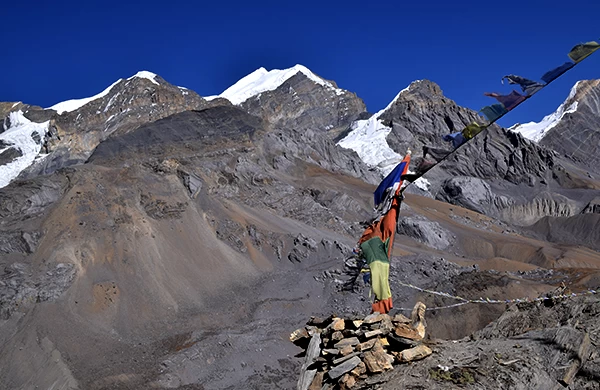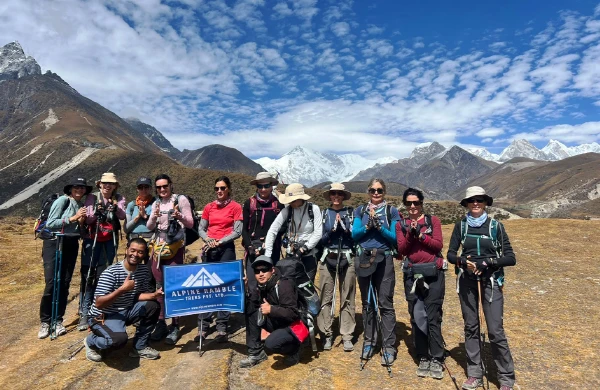Yes, the Annapurna Circuit Trek in Nepal is still worth trekking. As one of the first and most popular trekking trails in Nepal, the Annapurna Circuit offers a well-rounded experience that takes you from quaint villages through forested trails to majestic mountains, including the highest mountain pass in the world. This is an adventurous journey with the perfect balance of culture and nature.
Exploring the Relevance of Nepal’s Classic Annapurna Circuit: Is It Still Worth It?
The Annapurna Circuit has a long history of being hailed as a top-tier trekking experience. Swiftly becoming known as Nepal's trekking jewel, it offers breathtaking landscape diversity, cultural encounters abound, and the exhilaration of navigating high mountain passes. However, many hikers now ask: will the Annapurna Circuit still be worthwhile in 2025, given the proliferation of new roads, changing tourist trends, and alternative trails?
History of the Annapurna Circuit Trek
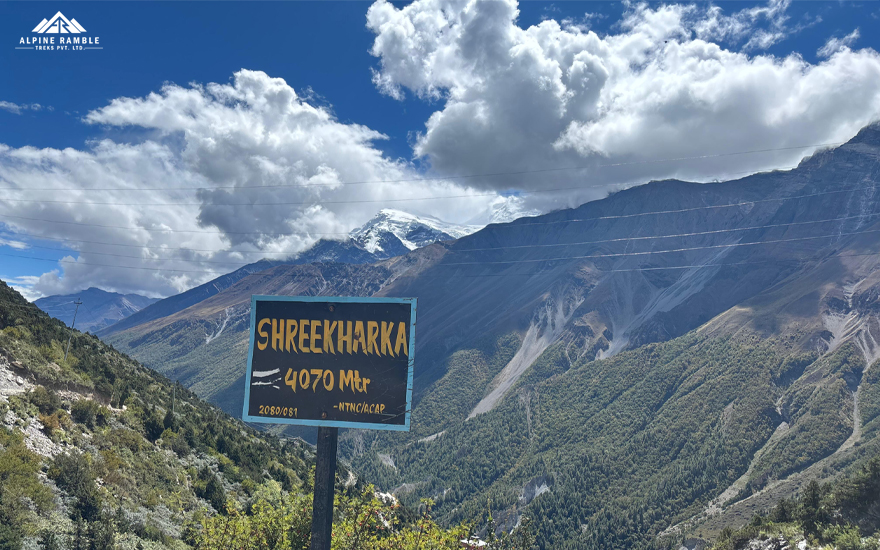
Nepal did not dabble in the tourism sector of the trekking industry until the 1970s. The history of trekking in Nepal literally starts with the Annapurna Region, specifically the Annapurna Circuit Trek. This trek was the first-ever route that was made accessible to tourists in 1977.
The original route of the Annapurna Circuit Trek started in Dhumre, situated on the Kathmandu-Pokhara highway, and ended in Pokhara. The route encircled the Annapurna Massif, crossing the Marsyangdi River and the Kali Gandaki Gorge; it took a total of 23 days to complete the trek. Known as the classical route, it is estimated to be approximately 230 km long. But over time, infrastructural changes, especially the construction of roads, have compromised the hiking routes, making these places accessible by vehicles.
The true potential of the Annapurna Circuit Trek made this trek popular among tourists visiting Nepal, offering unprecedented views of the Annapurna Massif, Dhaulagiri Range, and Nilgiris, along with diverse communities and cultures and rich natural and ecological resources.
Annapurna Circuit Trek in Present Time
The Annapurna Circuit trekking trail has seen many changes over the years as trekking in Nepal started to bloom. The construction of roads and airports has made many remote places in Nepal accessible. Now the roads have reached Manang Village, which means a few days of trekking can be covered within hours. But although covering long distances in a short time has become easier, doing so is not wise because altitude sickness can become a significant problem.
This has caused problems for those seeking a peaceful trekking experience due to disturbances from the growling and honking of vehicles. In present time, the route that once took 23 days to complete can be done in as little as 14 days. But the views are still as majestic as they were decades ago, the people are still hospitable, and their culture is still unique and diverse. It is still worth planning a trek that takes you to some of the places with the magical views of the mountains of the Annapurna Range and experiencing some authentic culture of the communities of the Annapurna Circuit.
Highlights
The Annapurna Circuit trek is one of the most popular trekking destinations in Nepal for a reason. Here are the highlights of this trip and why you should consider it your next trekking destination:
Snowcapped Mountain Ranges
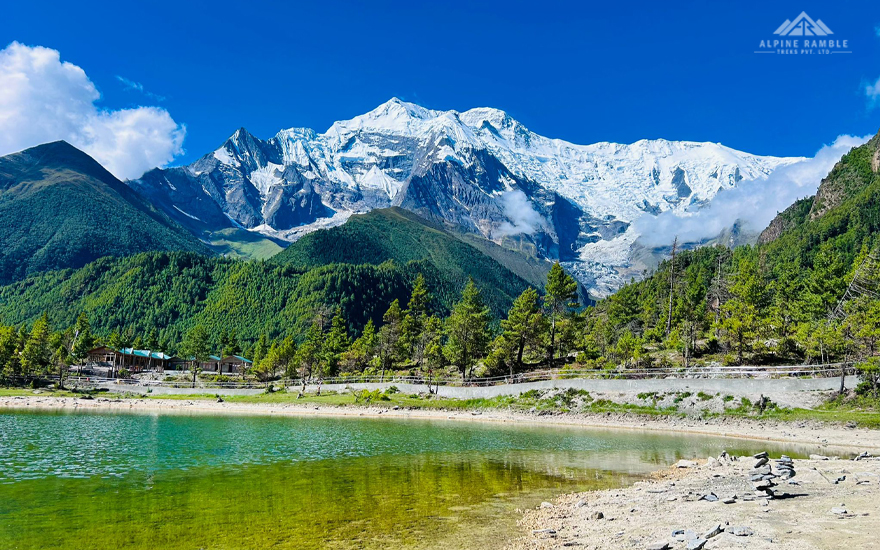
One of the most enticing parts of doing the Annapurna Circuit Trek is the mesmerizing mountain views you get to see throughout the trekking route. The Annapurna Massif, which includes Annapurna I, II, III, and IV; the Dhaulagiri Range; Machapuchhre; Manaslu; the Gangapurna; and the Nilgiri Range, can be seen from various points of the trekking route of the Annapurna Circuit.
Among them, Mount Dhaulagiri (8,167 m), Mount Manaslu (8,163 m), and Annapurna I (8,091 m) are the seventh, eighth, and tenth highest peaks in the world. These snow-covered giants are a testament to the beauty and resilience that the Annapurna Circuit Trek has to offer.
Manang and Other Beautiful Villages
You will pass through some of the most beautiful villages with unique architecture in different parts of the trail. Some of the prominent villages of the Annapurna Circuit include Besi Sahar, Manang Village, Mustang Village, and Jomsom. Each village has its own unique flair and offers warm hospitality to the trekkers passing by.
Gurung and Magar cultures dominate, but there are also mixes of Bhramins, Chhetris, and Newars. Tibetan Buddhism is the most prominent religion, which you can see reflected in small chorten, prayer flags, mani walls, and monasteries, but it also mixes with hints of Hinduism, which includes Muktinath Temple. The intricate architecture of the houses provides an unusual perspective on the lives of the local communities and their way of living.
Thorong La Pass
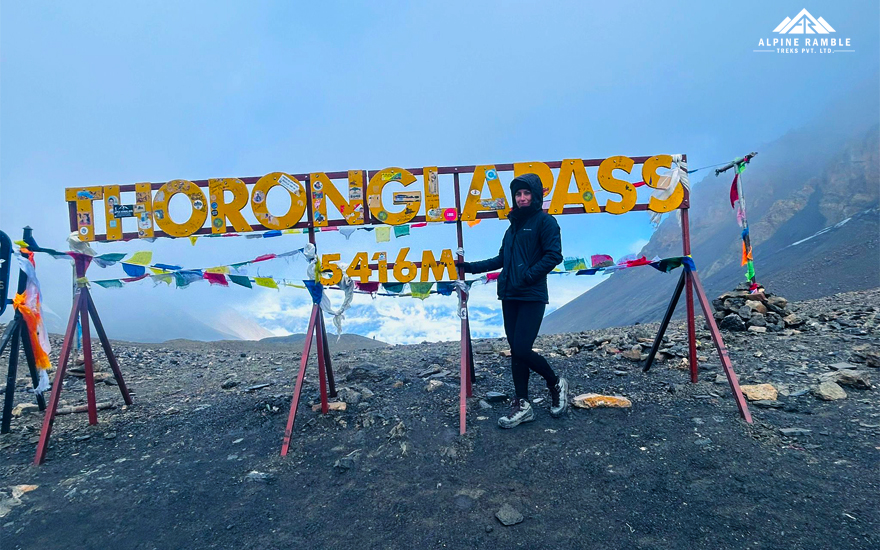
Not only does the Annapurna Circuit Trek offer wonderful views and community interaction, but it also adds a personal achievement to your bucket list as you cross the world’s highest mountain pass. At an elevation of 5,416 meters (17,769 feet), Thorong La is considered the highest pass in the world that connects Manang Village of the east to Mustang Valley of the west.
It is one of the major highlights of this entire trekking experience, something that will push you to your limits as well as offer some of the most captivating 360° views of the Annapurna and Manaslu regions and mountain landscapes. You can see prominent views of the Annapurna Massif (Annapurna I-IV), Dhaulagiri, Manaslu, and the iconic Fishtail mountain (Machhapuchhre).
Muktinath Temple in Mustang Village
A very significant landmark for both Hindu and Buddhist devotees is the temple of Muktinath, situated in the Mustang Village. A sacred site 3,710 meters in the Himalayas, known as “a place of liberation,” with 108 holy springs and an eternal flame, offering spiritual tranquility and stunning mountain views.
Thousands of pilgrims visit this holy site every day during the peak seasons, not only trekkers but also local tourists. The water coming from the 108 sacred taps is said to wash away your sins if you bathe under it.
Muktinath is also known as "Chumig Gyatsa," which translates to "Hundred Waters" in Buddhist, and it is believed that Guru Rinpoche (Padmasambhava) meditated there. For Hindus, it is a site of redemption (Moksha) and one of the 108 holy temples devoted to Vishnu. All in all, you can witness how two religions coexist in harmony.
Annapurna Conservation Area
The Annapurna Circuit trekking trail falls within the boundary of the Annapurna Conservation Area of Nepal. Known for its diverse landscapes, rich biodiversity, and ecological richness, the Annapurna Conservation Area was established to conserve the flora and fauna along with community efforts. Rich in biodiversity, it is a treasure house for 1,226 species of flowering plants, 105 mammals, 523 birds, 40 reptiles, and 23 amphibians.
It is the largest protected area of Nepal, and many trekking routes of the Annapurna region fall within its area, which stretches across Manang, Mustang, Kaski, Myagdi, and Lamjung Districts. It also includes the world’s highest pass, Thorong Pass, and the world’s deepest gorge, Kali Gandaki Gorge.
Diverse Cultures and Traditions
Hindu and Buddhist influences from a variety of ethnic groups, such as the Gurungs and Thakalis, blend with Tibetan cultural traits that become more noticeable at higher altitudes to form the Annapurna Circuit trail's cultural tapestry.
This means you can enjoy and participate in festivals of both religions, such as Loshar of Buddhists and Dashain and Tihar of Hindus. It is such an amazing opportunity that you can plan your trek around the festivals celebrated in Nepal.
How many days does it take to do the Annapurna Circuit Trek? Different Routes
As the Annapurna Circuit is the oldest trekking route of Nepal, it became a route when there was no infrastructural development in the Annapurna Region. The starting point of this trek began from Dhumre, on the Kathmandu-Pokhara highway, and ended in Pokhara. And the only option was hiking from day 1 to day 23.
Now, however, things have changed drastically, from transportation facilities to other services. But not all can be attributed as a positive change; some of these changes have also negatively impacted the trekking routes and experiences of the people.
That being said, the classic or the very original Annapurna Circuit Trek took a total of 23 days to complete, but at present time, because of the road access to Manang, the itinerary of this trek can be customized as per the need of the customer and can be done in as little as 10 days.
The access road has provided many people with the opportunity to deduct a significant number of days from the classical route, which means people who cannot get almost one month of holiday can now do the short version of the Annapurna Circuit Trek.
Trekking Trails vs. Roads in the Annapurna Circuit Trek: Impact and Effect
The roads reaching Manang village, part of the Annapurna Circuit Trekking trail, have both a good and a bad side. While there has been road access, the condition of the roads isn’t really good. And it negatively impacts trekkers on their feet because the vehicles cause disturbances not only from honking but also from flying dust when it's dry and splashing slippery mud when it's wet.
However, it has been a blessing for the locals to transport goods from the city to their teahouses and even for people who do not want to trek but still want to experience the mountain views from up close.
The Pros and Cons of Roads in the Annapurna Circuit Trek
The accessibility of roads to Manang Village has both advantages and disadvantages, but ultimately, it depends on one's perspective. Here are the pros and cons of road access in the Annapurna Circuit Trek trail and whether it is worth it or not.
Pros of Roads in the Annapurna Circuit Trek
- Easy travel and accessibility, particularly for trade, goods transfer, and access to medical care, greatly benefit the local population.
- Time-efficient and shorter itineraries are beneficial for trekkers who are short on time and have inflexible schedules.
- It makes emergency evacuation easier and faster.
- A hybrid trip combining trekking and riding allows you to enjoy the best of both worlds.
Cons of Roads in the Annapurna Circuit Trek
- Disturbance in the peaceful environment due to dust and noises created by vehicles.
- The lower parts of the original trekking trail will be lost, as you will essentially be hiking on the road instead.
- The teahouses of the lower regions lose their business as most people skip their village entirely.
- There will be less feeling of remoteness from hiking through the Himalayas.
Solution for the Roads
We are aware that hiking on the dusty road is what most trekkers do not come here to experience, especially on the Annapurna Circuit trekking trail, which is the oldest trekking route in Nepal. Many people do not find it worth it, having to walk alongside the vehicles, which produce noises and dust, minimizing the positive experience. However, solutions have been created for such problems.
Now, alternative trekking routes have been developed by the local communities that bypass the roads and take you to a much more secluded trail without any vehicle disturbances. You can get the authentic trekking experience of what has been named the New Annapurna Trekking Trails (NATT). This route helps you avoid much of the road and takes you through inner-built paths that people normally do not take. Enjoy a much more peaceful experience with mesmerizing views of quaint villages, alpine forests, and majestic snow-capped mountain ranges.
Best Time to do the Annapurna Circuit Trek
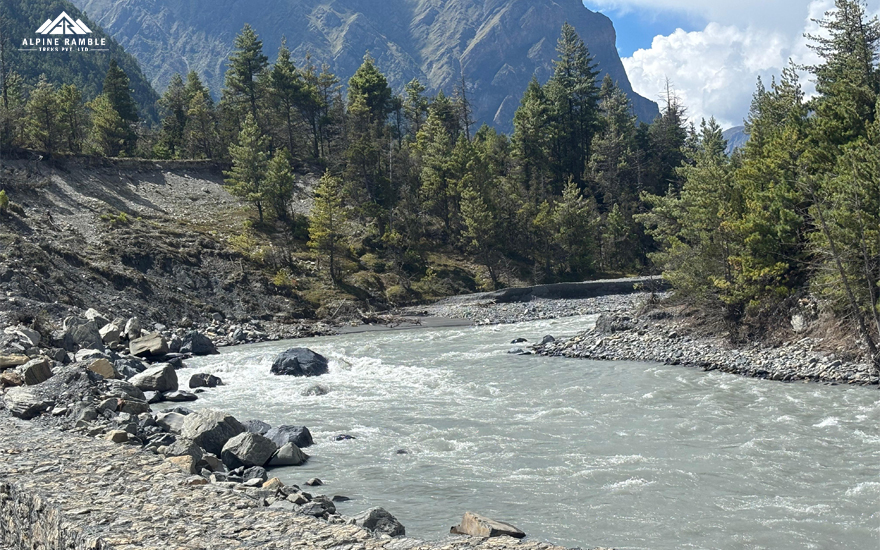
In general, spring and fall are thought to be the best times to do mountain treks, including the Annapurna Circuit Trek. The spring (March-May) season offers warmer moderate temperatures, stable weather, and clear visibility. While autumn, or fall (September-November), is more known for having cooler temperatures, it also has equally stable weather and the best visibility, which makes it the best choice.
In lower areas, spring temperatures average 0°C to 25°C (50°F to 77°F), but at higher altitudes, they can drop to -6°C to -10°C (14°F to 21°F) at night. Autumn temperatures range from 10–20°C (50–68°F) at lower elevations to -10°C or 14°F at higher elevations.
Even though summer (June–August) and winter (December–February) aren't technically trekking seasons, those two seasons still offer plenty of opportunities for outdoor adventure and trekking experience. Summer, which is mostly monsoon season in Nepal, is when most parts of the country experience heavy rainfall on a daily basis.
But the best part of the Annapurna Circuit Trek is that its higher elevation is considered a shaded region and does not experience rainfall. It makes this trek perfectly safe to undertake even during the monsoon season. The average daytime temperature is between 15°C and 30°C (59°F and 86°F), with temperatures sharply decreasing as the elevation picks up. Since it is off-season, the trails will be much more peaceful because there will be fewer people.
The winter season will be colder than any other season, but it will offer outstanding visibility of the snowcapped mountains under the crystal blue skies. The average daytime temperature ranges from 9 to 12°C (48-54°F) at lower elevations, while it becomes significantly colder at higher altitudes, to -20°C (-4°F) or lower. But again, similar to summer, there are fewer people on the trail, and it lets you have an intimate trekking feel.
Therefore, if you understand the advantages and disadvantages of each season, you can make the Annapurna Circuit Trek the most enjoyable experience. But no matter what time you pick, being well prepared for the trek’s demands will make it worth it.
Is the Annapurna Circuit Trek Difficult?
To determine the worthiness of the Annapurna Circuit Trek, you first need to know how difficult it is to successfully complete the trip. While trek difficulty is pretty subjective, the Annapurna Circuit Trek is generally considered moderate to challenging. The rugged terrain, high altitude, cold temperature, and basic facilities can make the trek a bit challenging.
This trek requires a certain fitness level, both mental and physical, to tackle difficulties like long days, hours of hiking, elevation changes, unpredictable weather, and the challenging Thorong La Pass (5,416 m). While previous trekking experience definitely helps, even a beginner trekker can do this trek, but it requires heavy training and preparation prior. To conquer the challenging parts of the hike, one must be physically fit, have enough time to acclimate, and have an optimistic outlook.
How much does it cost to do the Annapurna Circuit Trek?
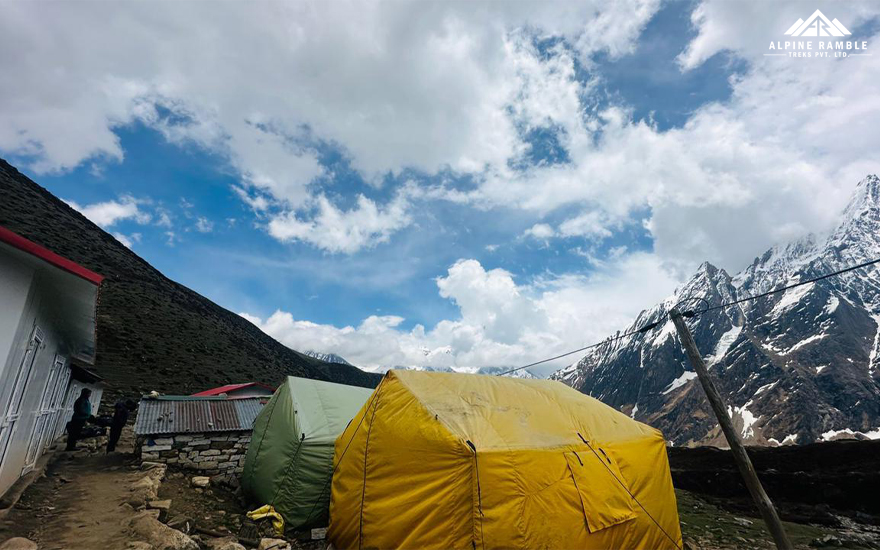
There are various factors that the cost of the trek depends upon. The length of the itinerary, the size of the group, the lodging, and whether you hire a guide or porter all affect how much the trek will cost. Equipment, food, lodging, transportation, and permits are major expenses. A general rough breakdown of the Annapurna Circuit Trek package is given below:
- Permits Required: ACAP (Annapurna Conservation Area Permit) + TIMS (USD 50 total).
- Accommodation: $5–15 per night (tea houses).
- Food: $20–40 per day.
- Guides/Porters: $30–35/day for a guide, $20–25/day for a porter.
- Average Total Package Cost: $400–$1,200, depending on the type of package and services.
Reasons why it is still worth it to do the Annapurna Circuit Trek
It has been decades since the Annapurna Circuit trekking trail was opened up for tourists, and it remains one of the most popular routes in Nepal. Just like in the past, doing the Annapurna Circuit Trek is still worth it, and here’s why:
- Diverse landscapes range from small villages amidst the forested hills to the barren but expansive mountain landscapes, including some of the highest peaks in the world.
- As a part of the Annapurna Conservation Area, get the chance to experience the diverse flora and fauna.
- There are diverse communities living in unity, where different cultures, traditions, and religious beliefs coexist in natural harmony throughout the trail of the Annapurna Circuit.
- The prices are very affordable compared to the Everest Region.
- There are accessible roads, proper logistics, and good facilities and services in most parts of the trail.
- You have the freedom to customize the itinerary, which allows you to add or deduct the number of days for the trek.
- You can add other destinations as your side quest, such as Tilicho Lake or the Annapurna Base Camp Trek, or you can even do a combination of the Manaslu Circuit Trek and the Annapurna Circuit Trek.
- Enjoy the local culture, festivals, and cuisines with the warm hospitality of the locals during the trek.
Is it still worth it to do the Annapurna Circuit Trek? What’s the verdict?
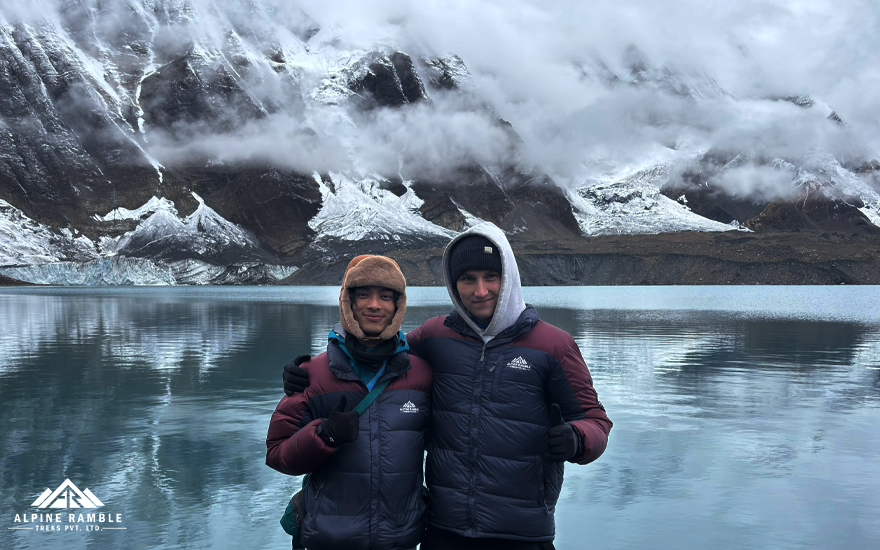
Yes, it is still worth it. While many people have expressed concerns about the roads' reach and the alteration of the original trail, the Annapurna Circuit Trek offers an unparalleled nature and cultural experience.
This trek takes you on an enchanting journey from hills to mountains, from the highest pass in the world to the deepest valley. It is an experience that no other trekking destination offers. Even more so, you have flexibility in both time and budget for this trek. The warm and hospitable people will be a major highlight of this trek, along with some of the highest peaks in the world, including Annapurna Massif (Annapurna I-IV), Dhaulagiri, Manaslu, and the iconic Fishtail mountain (Machhapuchhre).
Not only will this trek be an opportunity to go down a more spiritual path as every little thing connects with Tibetan Buddhism as well as Hinduism and people’s faith, but it will also allow you to see yourself from a different perspective and put you on a path to self-discovery. It also covers quite a part of the Annapurna Conservation Area, where you might get the chance to see many rare and endangered species of plants, birds, and animals.
The Annapurna Circuit Trek is the perfect way to look into how communities come together to preserve their culture and traditions as well as actively participate in conservation of the environment. But at the end of the day, the verdict is yours.
Tips and Tricks to Maximize Your Experience
Here are the tips and tricks that you can use before or during the trek, which will help you to maximize your trip as well as enhance your experience.
- Choose the best time for you. It means, instead of planning your trek when everyone else does it, see if other seasons are more in your vibe. For example, if you do not like crowded trails, then choosing summer or winter might be the better option.
- Train your body with exercise, especially focusing on stamina increase, cardiovascular exercise, and breathing control, which will be an immense help during the trek.
- Trek with proper acclimatization, as rapid ascending will result in altitude sickness. Ascending gradually reduces the likelihood of altitude sickness by allowing the body to adjust to the lower oxygen levels.
- Stay hydrated and eat a well-balanced meal that will give you the required energy
- Pack smart, light, and efficiently. Make sure you are aware of what you need and don’t need while trekking so you can avoid carrying unnecessary things that will just make your trek harder than necessary.
- Try to enjoy the moment and disconnect from the internet and electronics to really reconnect with yourself and nature.
Responsible and Sustainable Trekking
Being a responsible traveler is vital, along with traveling sustainably. Even our small decisions can make a big impact, especially when it comes to tourism. Your visit can benefit the communities, but it can also be very damaging. So, here is how you can be a responsible tourist while doing the Annapurna Circuit Trek:
- First and foremost, respect the local communities and their culture. Feelings of culture shock are common and understandable; however, it is critical to maintain respect and make an effort to comprehend the other culture's perspective.
- Minimize your use of single-use plastics, pick up after yourself, and avoid littering. For this, you can carry your water bottle and water purifying tablets so you can stop buying bottled water.
- Practice the famous quote, "Take only memories, leave only footprints."
- Be ethical when hiring guides and porters, make sure they are paid fairly by the company, and have proper gear and insurance.
- Show your appreciation toward the people you encounter throughout your journey.
Content Summary
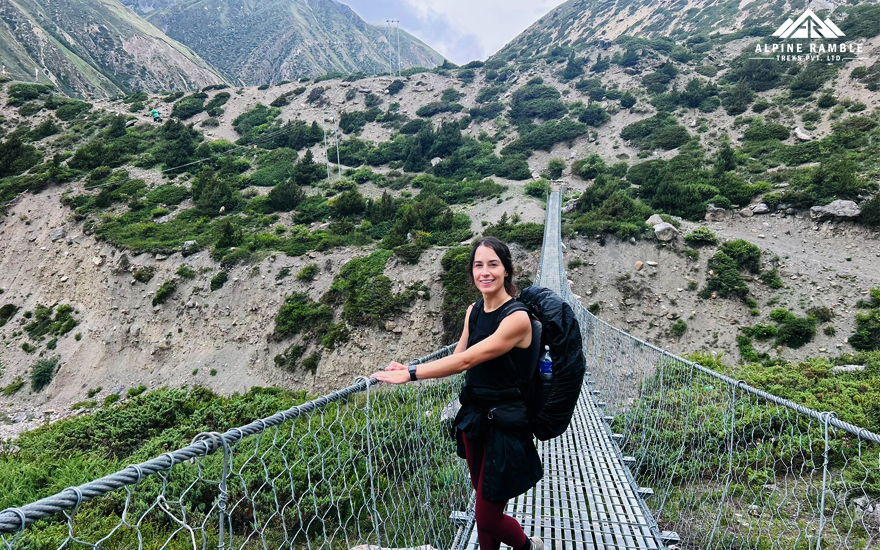
At the end of the day, the ACT remains the oldest route and one of the most popular trekking destinations among trekkers all over the world. So, yes, it is absolutely worth it to do the Annapurna Circuit Trek. While there have been changes throughout the decades, especially regarding the road access, many trekkers have expressed their displeasure, saying that it clashes with the peaceful trekking experience because of the honking vehicles and dusty roads.
While the points they raise are valid, the road access also means access to many services, especially to the local villages, where transporting goods always relied on mules or humans. So, the reach of roads to the high mountains does not always mean a bad thing. It is more accessible and provides flexibility, especially for those who don't have weeks to spare.
The raw Himalayan beauty still remains, as the trail of the Annapurna Circuit takes you to the highest pass in the world, Thorong La, an untouched part of this trek providing you with the absolutely gobsmacking views of the snow-covered giants. The villages still have their essence and showcase the cultural and traditional connection with Tibetan Buddhism. You can see it reflected in the architecture of their home, which includes mani-inscribed walls, prayer flags, and small chortens as well as large monasteries. No amount of paved roads can erase these experiences.
In fact, this trek offers you the option to choose between a long or short journey by either taking a jeep or hiking the alternative, more secluded path. This kind of flexibility and option is rare to find, especially in the Himalayas of Nepal.
So, is it still worth it? Without any doubt. If you're wondering whether to include it in your travel plans, the answer is simple: go for it. The mountains await.
Frequently Asked Questions (FAQs)
Is the Annapurna Circuit Trek still worth it?
Yes, the Annapurna Circuit Trek is still worth it. You will get to experience the highest mountains, Thorong Pass, Gandaki Gorge, Muktinath Temple, authentic villages, cultures, etc.
How long does it take to complete the Annapurna Circuit?
It can be a flexible trek, which can take anywhere from 12 to 18 days depending on your itinerary and use of transportation services.
What is the highest point of the Annapurna Circuit?
The highest point of the Annapurna Circuit Trek is the Thorong La Pass at 5,416 meters (17,769 ft).
Do I need a guide or porter for the Annapurna Circuit?
Yes, a registered guide is mandatory for any trek in Nepal, including the Annapurna Circuit, as per the regulations enforced by the government. However, hiring porters is optional.
What permits are required for the Annapurna Circuit?
You need two permits:
- Annapurna Conservation Area Permit (ACAP)
- Trekkers’ Information Management System (TIMS) card
When is the best time to trek the Annapurna Circuit?
Autumn (Sept–Nov) and spring (Mar–May) are the best seasons, offering clear skies, good weather, and vibrant landscapes. However, summer and winter are less crowded and still trekkable.
How difficult is the Annapurna Circuit?
In general, it is considered a trek that ranges from moderately difficult to challenging. The journey involves long days, steep climbs, and altitude challenges but is manageable for fit beginners with preparation and training.
Is altitude sickness a big risk on the trek?
Yes, especially around higher altitudes such as Manang and Thorong La Pass. Therefore, acclimatization days and a slow pace are essential.
What kind of accommodation is available?
The teahouses or trekking lodges have accommodations available. They provide basic rooms with twin beds and common bathrooms. You can upgrade to an attached bathroom for an increased cost.
Can I charge my phone or use Wi-Fi on the trek?
Yes, but at higher elevations you might experience spotty connections and additional charges for electricity or Wi-Fi.
What should I pack for the Annapurna Circuit?
You should pack layers for varied climates, good trekking boots, a sleeping bag, a down jacket, water purification, and a basic medical kit. Pack light but smart.
Do I need travel insurance for the trek?
Yes, you require travel insurance. It should cover emergency evacuation and high-altitude trekking (above 5,000 m).
How much does the Annapurna Circuit cost?
On average, $25–40 USD per day, depending on food, accommodation, permits, and whether you hire guides/porters.
Can I trek the Annapurna Circuit solo?
Yes, you can do a solo Annapurna Circuit Trek but with a registered guide.
Is the Annapurna Circuit suitable for beginners?
Yes, with preparation and fitness training. Many first-time trekkers succeed, as long as they acclimatize properly and ascend gradually.
How do I avoid the road sections?
There are alternative trails like the Upper Pisang route, Ngawal, and Tilicho Lake side trips to maximize the scenic experience.
Is it possible to do the trek in winter or monsoon?
Yes, as long as you are ready to tackle the weather patterns, such as extreme cold during winter and rain in the lower regions during summer. In fact, winter or monsoon can be the best time.

